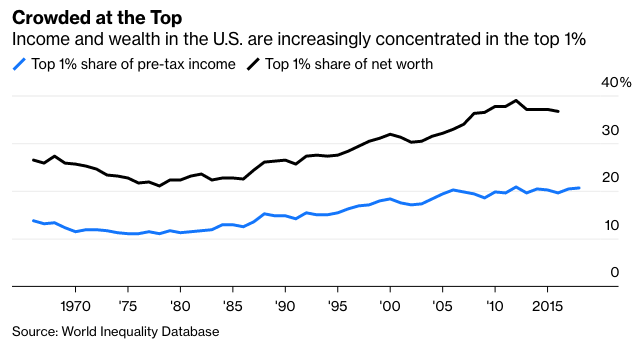Plenty of people will tell you that the unrest spreading through the U.S. is rooted in inequality—in the dissatisfaction of the 99%. But what if it’s not that simple? What if there’s also an important battle going on within the 1%? For the sake of the nation’s survival, it’s worth considering.
No doubt, people are angry.
According to a recent Pew survey, 87% of Americans say they’re dissatisfied with the way things are going in the country. Partisan animosity has been building for decades and is now at a fever pitch, with incendiary rhetoric a constant feature of Twitter and other social media. Recent nationwide protests over police brutality and racism have been some of the largest and most widespread in the country’s history. The rise of Donald Trump, a leader more polarizing and intolerant than any in living memory, is itself a sign of deteriorating national stability.
Historian Peter Turchin, who believes episodes of unrest happen every half century or so, has a theory to explain what’s troubling the country. According to Turchin, the basic problem is too much competition among elites. With more inherited wealth and more people getting advanced degrees, he reasons, there are more claimants to a relatively fixed number of positions in the upper echelons of politics, business and other social hierarchies. With so many destined to lose out in the increasingly fierce competition, there is bound to be widespread anger and disappointment.
By itself, this elite-centric theory seems insufficient. Many working-class people are also marching in the streets and voting for politicians with extremist views. But angry educated and rich people lend special weight to any revolution, since they are precisely the people who have the talent and resources to foment revolution and chaos. Ultimately they provide the funding and craft the messaging for organized extremism and violence.
Turchin’s theory is all the more worrying because the number of elite spots has been shrinking in recent decades, as a result of technological and economic changes. Wealth and income have become increasingly concentrated at the top of the distribution:

In 1990 there were only 99 billionaires in the U.S.; now there are more than 600. Even accounting for inflation, that’s an enormous increase in the upper echelons of wealth. As inequality rises at the top, the standards for what counts as success rise accordingly. Having $10 million in the bank just doesn’t command the respect it used to, when Mark Zuckerberg’s fortune is 8000 times as large.
And structural changes in the economy are making it ever harder to reach the top tier. Across a broad range of industries, a few top companies are taking larger market shares. This might be because these companies are hoarding talent and intellectual property, because the Internet has extended the reach of corporate behemoths, because network effects have become more common, or for various other reasons. Whatever the cause, winner-take-all markets seem to be proliferating. That means a few ambitious entrepreneurs will become Zuckerbergs while the rest are left gnashing their teeth.
It isn’t just the business world where top-level success is becoming less attainable. Consider academia. Many ambitious young educated people dream not of wealth but of the intellectual respect that comes with a tenured professorship. But the end of the mid-20th-century expansion of the U.S. university system, along with more recent declines in state funding for colleges, mean that tenure-track positions are a shrinking part of university faculty:








